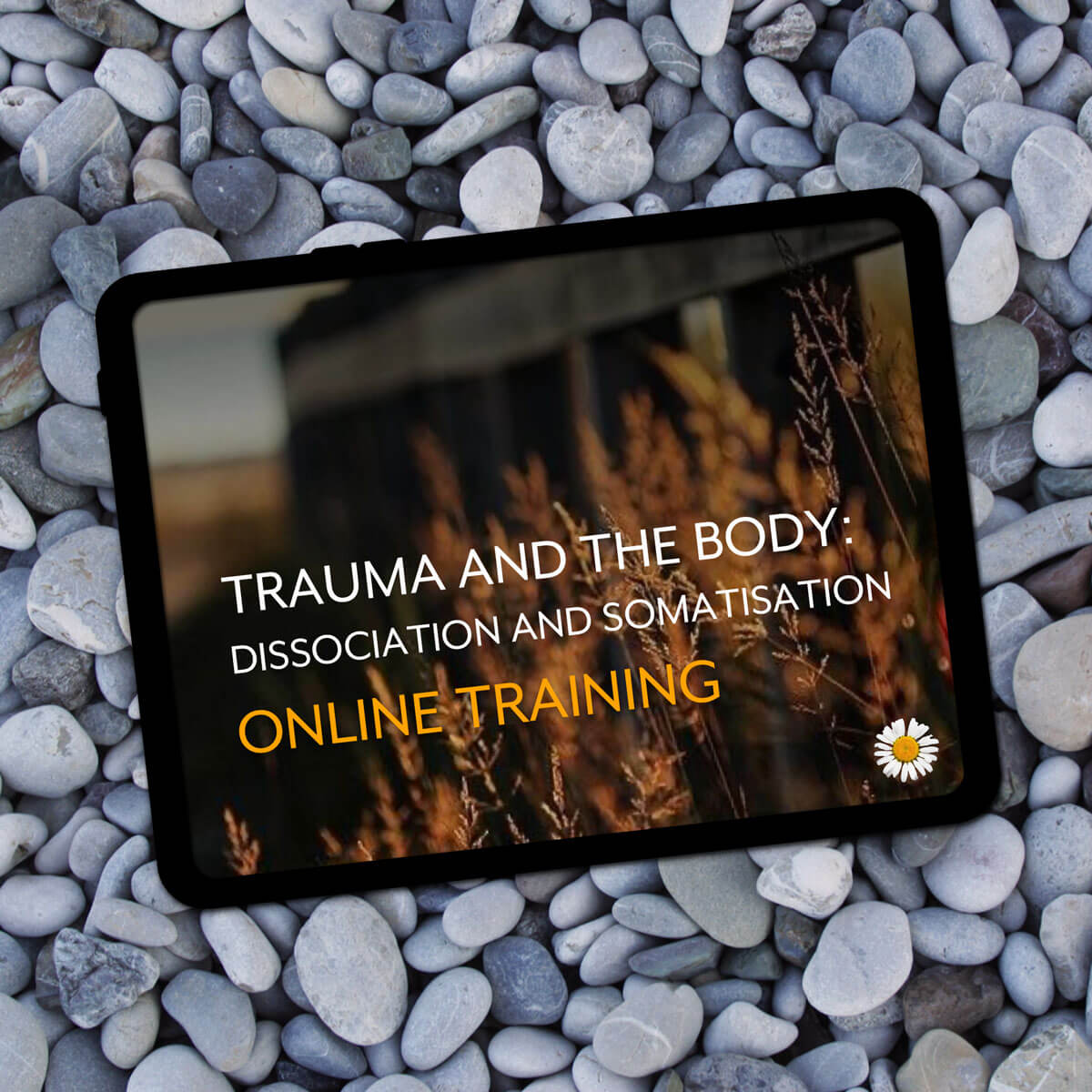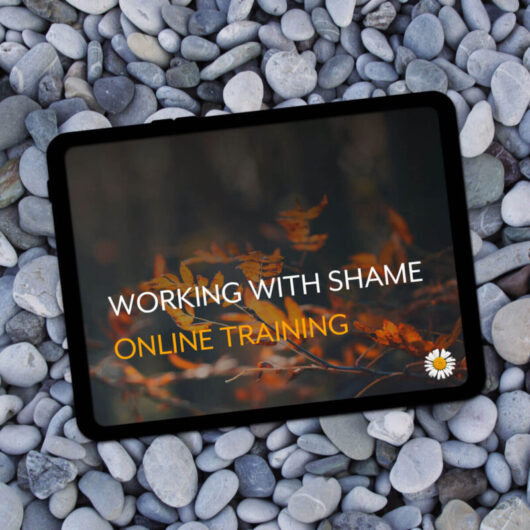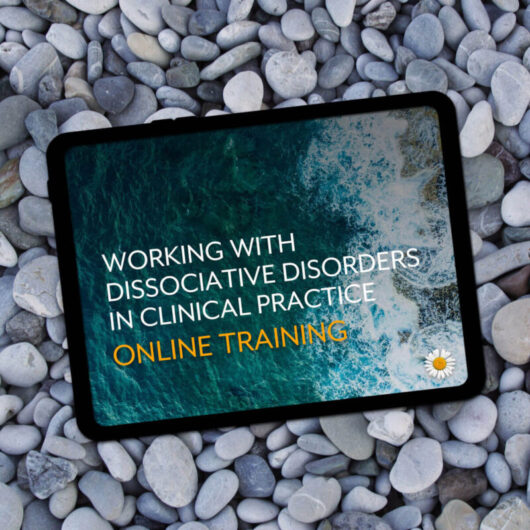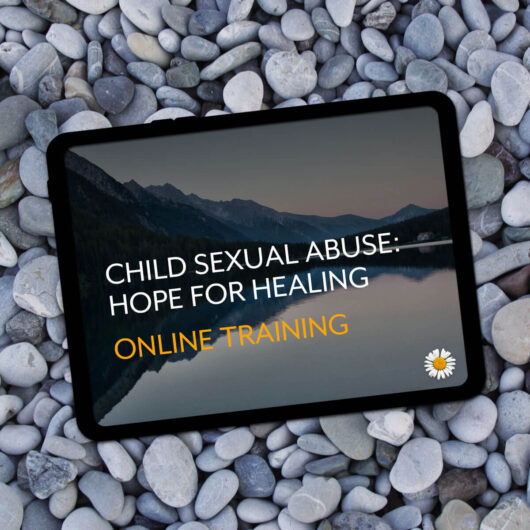Trauma doesn’t just affect the mind and the emotions. It profoundly affects the brain and the body too. Often ‘the body remembers’ what the mind cannot, manifesting not just in long-term psychological difficulties but in physical ones too. Trauma is not something ‘all in the mind’, or something that we can just think or talk ourselves out of.
On this course I look at how there is no real split between ‘body’ and ‘mind’ – and certainly not when it comes to trauma.
“Carolyn is an inspiration in regards to her work on trauma recovery. This course ‘Trauma and the Body’ was educational and fascinating, and helpful for recognising possible trauma responses in my clients which I may otherwise have missed.”
“This course was absolutely incredible – so much of it applies to my own life and experiences as a survivor of trauma, and I feel much more prepared to move on from my past experiences especially within therapy. Thank you so much for putting this course together.”
“I found this course so useful and informative – especially the psychoeducational aspect. I have come away feeling a lot more confident and knowledgeable on the topic of trauma and the body. This is my first Carolyn Spring online course and it definitely will not be my last.”
“This is the second course I have purchased from Carolyn Spring and it will not be the last. I love everything about the courses: they are informative, engaging and strangely soothing which I put down to Carolyn’s voice and pace of language. The resources are downloadable to keep and reflect back on which I have done many times. I am a counsellor in further/higher education and work with trauma on a daily basis. What I have taken away from Carolyn’s courses has been so valuable to my practice and the students I work with. I cannot thank you enough.”
“I thoroughly enjoyed this course. Although it is set up in bite-sized sections to allow the training to be done in our own time, which is helpful, I found how the topic was presented so interesting that I just wanted to watch one section after the next. Invaluable training for me to gain deeper and deeper understanding of my clients especially from a physiological and neurological perspective.”
“I found the training very interesting with lots of stimulating points for further exploration. Also a very good introduction to the connection between mind and body and the existing research on it. The videos are the perfect length and delivery of the training is clear and stimulating.”
“I thought that this was an excellent course. It is not easy to deliver online training that is so engaging and informative. The breakdown of the overall topic into individual lessons was particularly helpful and allowed me to work at my own pace, manage time dedicated to the training and process the information. Easy to use and navigate. Clarity of information and pace of delivery were conducive to learning. Excellent value for money.”
“Another really good course; I find Carolyn’s ability to express brain science in a way that is clear and easy to understand very helpful. The course was great value for money and very easy to complete/use.”
“The course was in one word – amazing. I found the pace and delivery method just perfect.”
“Brilliant, this has brought together all of the gaps in my knowledge around trauma, the value for the content was incredible and I feel I’m walking away with a whole new toolbox!”
- Available instantly upon purchase
- No set schedule – work at your own pace
- 6 hours of CPD with certificate upon completion
- Downloadable resources and additional reading for a comprehensive learning experience including:
- Course Notebook (with space for notes, reflection questions, session summaries, references and links)
- PowerPoint handouts (two versions, one with space for notes, one for easy printing)
- Set of psychoeducational posters (full-colour and low-ink versions)
- MP3 audio files
- Videos available to stream or also downloadable for offline viewing
- Lifetime access
- Start/stop and return as often as you like
- Easy to use: only needs a web browser and PDF reader
- Individual licence only: for multiple users and information about discounts for organisations, please click here.
Trauma is a supremely physical phenomenon, affecting every single cell in our body. In fact, trauma is based far more in our body and ‘back brain’ than it is in thinking, human ‘front brain’. In this course I explain what happens in the body at the moment of trauma and how our reactions are determined by survival instincts based on millions of years of evolution. I explain my ‘trauma traffic light’, based on polyvagal theory, and what it looks like in practice – and why the ‘freeze’ response (the red zone) leads to learned helplessness … and what the words ‘Faa’ and ‘Baa’ have to do with this.
In this course, find out:
- How and why the mind and body were split up by ‘science’ in the first place
- How the body is often both the medium through which the original trauma was enacted, and also the source of ongoing suffering and self-hatred
- Why trauma leads to increased risk for heart disease, cancer and diabetes
- Why so many people with autoimmune disorders such as rheumatoid arthritis, chronic fatigue syndrome (aka ME) and fibromyalgia have a history of trauma or persistent stress
- The difference between implicit and explicit memory and the reason for ‘body memories’
- Why chronic pain is so common after trauma
- What somatisation is and why the ‘cure’ for it is in relationships
- And much more.
Join me on this fascinating course and explore the mindbody connection at the root of trauma symptoms – all explained in a simple but not simplistic way that is relevant to everyone.
Course Content Summary
Session 1
- Exploring how trauma is rooted in bodily reactions rather than being a purely psychological response, and how those short-term reactions help us survive immediate threat whilst carrying long-term consequences.
- Exploring the prevalence of long-term physical health conditions presenting in trauma survivors.
- Exploring the historical, religious and political pressures that led to a mind-body split (Cartesian dualism), and how this shapes our current-day approaches to health and the roots of mental health stigma.
Session 2
- Exploring the link between trauma and physical presentations of symptoms and ill health.
- Exploring attitudes towards the body, including shame and hatred, as a result of trauma and abuse.
- Exploring the autonomic nervous system and peri-traumatic phenomenological experience.
- Introducing the concept from polyvagal theory of a ‘trauma traffic light’.
- Exploring what actually happens in the body at the moment of trauma.
- Exploring the role of cortisol in peri-traumatic physiological response and its links to the red zone of freeze.
- Exploring the corrosive impacts of long-term release of cortisol on the body, including in diabetes, heart disease, cancer and some autoimmune disorders.
- Introducing research on the impact of psychological beliefs on the physiological stress response.
Session 3
- Exploring the physiology and phenomenology of freeze (dorsal vagal) as a survival response.
- Understanding the manifestation of the freeze responses as dissociative phenomena.
- Introducing Peter Levine’s theories of freeze and shaking as stages in immobilisation and re-mobilisation.
- Exploring the role of medication in dampening the remobilisation process.
- Exploring the breath as an interface between the autonomic and voluntary nervous systems and its role in reactivating the ventral vagus.
- Introducing concepts from Sensorimotor Psychotherapy of ‘completing the action’ to move out of freeze.
- Exploring the role of body posture and voluntary action in retraining the ‘back brain’ into mobilised responses to stress.
- Introducing concepts from Pierre Janet of ‘acts of triumph’ and using ‘alternative endings’ to process and repair the trauma narrative.
Session 4
- Exploring the red zone as a habituated psychological state of learned helplessness via the research of Martin Seligman.
- Exploring the concept of habituated freeze as the basis for a dissociative disorder.
- Exploring the belief of ‘I can’t’ as a trauma response not just a belief or a choice.
- Exploring how to overcome mental barriers which resist overcoming learned helplessness.
- Exploring the concept of ‘bottom-up’ versus ‘top-down’ processing via the McGurk Effect.
- Exploring the efficacy of mindfulness in disrupting ‘bottom-up’ processing and how it acts as a counter to dissociation.
Session 5
- Exploring cortisol-deficient physical states including depression, overtraining and CFS/ME.
- Exploring the theory of chronic fatigue syndrome as a red zone response to excessive amber state activation.
- Exploring CFS in terms of mitochondrial malfunction and the syndrome’s overlap with coronary failure.
- Exploring the role of persistent amygdala activation in autonomic dysregulation.
Session 6
- Exploring a phenomenological narrative of chronic pain.
- Exploring the psychosocial intersections of pain.
- Exploring the contrast between intuitive understandings of pain and the role of cognition, belief, expectation and meaning in pain experience, especially in relation to trauma.
- Introducing ‘Gate Control Theory’.
- Introducing concepts around phantom pain and ‘the rubber hand experiment’ and how they demonstrate the psychological component of pain and the potential for ‘body memories’.
Session 7
- Further exploring the concept of pain as a construct of the mind not just a signalling of physical injury.
- Exploring the link between somatisation and alexithymia and trauma.
- Exploring the role of the right orbitofrontal cortex in pain experience, social connectedness, verbal expression and immunity.
Session 8
- Exploring the concept of trauma and memory and in particular traumatic amnesia.
- Understanding the phenomenological experience of flashbacks.
- Differentiating between hippocampus-driven explicit memory, and amygdala-driven implicit memory, and how this contributes to traumatic memory as being qualitatively different to ‘normal’ memory.
- Understanding the loss/lack of explicit memory through clinical examples of hippocampal loss.
- Exploring the phenomenological experience of reduced explicit memory alongside heightened implicit memory.
- Exploring the clinical implications of ‘making the implicit explicit’.
- Exploring the role of the hippocampus as a ‘context stamp’ for memory and the importance of keeping it online in revisiting traumatic memory.
Session 9
- Understanding the role of the body in overcoming the freeze response.
- Exploring the effects of movement, novelty and SSRI on hippocampal neurogenesis.



